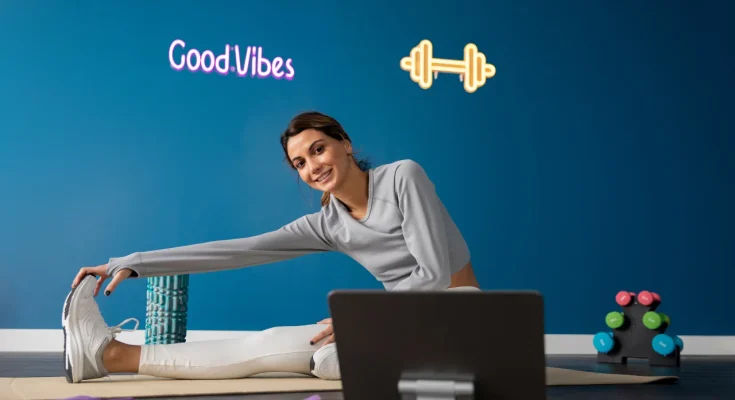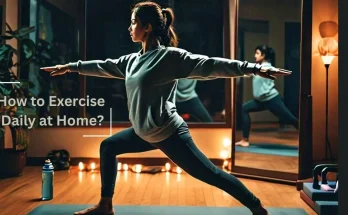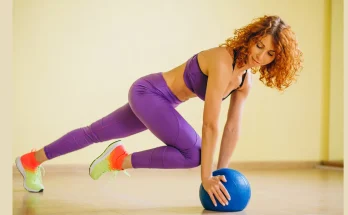In today’s fast-paced world, incorporating regular exercise into your routine is essential for maintaining overall health and well-being. But with so many workout options available, you may wonder: what is the best exercise for everyday practice? The answer depends on your fitness goals, but certain exercises provide universal benefits that enhance cardiovascular health, strengthen muscles, and improve flexibility.
This article explores the top exercises that are effective, simple to perform, and ideal for everyday use. We’ll also explain why a balanced workout routine combining these activities offers the best approach to achieving long-term health benefits.
Why You Need a Daily Exercise Routine
Before diving into specific exercises, it’s important to understand why daily exercise is critical to maintaining optimal health. Regular physical activity can:
- Boost energy levels: Exercise increases blood flow and oxygen to muscles, leading to improved energy and vitality.
- Enhance mental health: Exercise releases endorphins, the body’s natural mood elevators, which can reduce stress, anxiety, and symptoms of depression.
- Improve cardiovascular health: Consistent movement helps maintain a healthy heart and circulatory system, lowering the risk of heart disease.
- Strengthen muscles and bones: Weight-bearing exercises improve muscle strength and bone density, helping prevent injuries and age-related conditions like osteoporosis.
- Aid in weight management: Exercise burns calories, making it a key component of maintaining a healthy weight.
- Enhance flexibility and mobility: Daily stretching and movement keep joints flexible and reduce stiffness.
Now, let’s explore the best exercises to incorporate into your daily routine.
1. Walking: The Simplest and Most Effective
If you’re looking for a low-impact, accessible exercise, walking tops the list. It requires no special equipment and can be done virtually anywhere.
Why it’s great:
- Walking helps improve cardiovascular health, supports weight management, and strengthens muscles.
- It’s a low-impact activity that reduces stress on the joints, making it ideal for people of all ages and fitness levels.
- Walking outdoors can double as a mood booster, offering a mental break and fresh air.
How to get started:
- Aim for 30 minutes of brisk walking a day. You can split it into 10- or 15-minute intervals if needed.
- Gradually increase your pace and distance over time for more challenging cardio benefits.
2. Bodyweight Exercises: Strengthening Without Equipment
Bodyweight exercises are incredibly effective because they target multiple muscle groups and improve strength, flexibility, and endurance. Some popular bodyweight exercises include:
- Push-ups: Strengthen your upper body and core.
- Squats: Work your lower body, particularly the quadriceps, hamstrings, and glutes.
- Planks: Engage your core, back, and shoulders, improving stability.
Why they’re great:
- These exercises can be done anywhere—at home, in a park, or during travel.
- They improve muscle tone and overall strength.
- Bodyweight exercises are scalable; you can modify them to fit your fitness level.
How to get started:
- Aim for 3 sets of 10-15 repetitions for each exercise.
- For beginners, start with easier variations (like knee push-ups) and increase intensity as you progress.
3. Yoga: The Perfect Balance of Strength and Flexibility
Yoga is one of the best exercises for overall well-being, combining physical movement with mindfulness and breath control. Whether you’re a seasoned athlete or a complete beginner, yoga offers something for everyone.
Why it’s great:
- Yoga improves flexibility, balance, and strength.
- It reduces stress and enhances mental clarity, thanks to its focus on breathing techniques.
- Practicing yoga can also aid in injury prevention by promoting joint health and body awareness.
How to get started:
- Dedicate 15-20 minutes a day to yoga practice. Beginner-friendly poses include Downward Dog, Child’s Pose, and Mountain Pose.
- Online tutorials and yoga apps make it easy to start a home practice.
4. Swimming: A Full-Body Low-Impact Workout
Swimming is a fantastic low-impact exercise that works your entire body. It’s especially beneficial for people with joint pain or mobility issues, as the water provides natural resistance without the risk of injury.
Why it’s great:
- Swimming enhances cardiovascular endurance and works all major muscle groups.
- It’s easy on the joints, making it perfect for people recovering from injury or those looking for a gentler workout.
- Regular swimming can improve lung capacity and overall stamina.
How to get started:
- Aim for 20-30 minutes of swimming a few times a week.
- If you’re new to swimming, start with shorter sessions and build up your endurance.
5. Cycling: Fun, Effective Cardio Exercise
Cycling, whether on a stationary bike or outdoors, is another excellent form of cardiovascular exercise. It’s low-impact and ideal for boosting heart health while toning your legs and core.
Why it’s great:
- Cycling can be tailored to your fitness level, making it suitable for beginners and advanced athletes alike.
- It enhances leg strength, cardiovascular fitness, and overall stamina.
- Biking outdoors adds the benefits of fresh air and varied terrain, keeping the exercise exciting.
How to get started:
- Aim for 20-30 minutes of cycling at a moderate pace.
- If you’re cycling outdoors, wear a helmet and follow road safety guidelines.
6. Strength Training: Building Muscle and Bone Density
Incorporating strength training into your daily routine is key to building lean muscle mass and boosting metabolism. Whether you use dumbbells, resistance bands, or your body weight, strength training exercises like deadlifts, lunges, and bench presses are highly effective.
Why it’s great:
- Strength training boosts muscle strength, tones your body, and increases bone density.
- It can enhance your performance in other physical activities, from sports to daily tasks.
- Weight training also improves posture, balance, and joint stability.
How to get started:
- Aim for 2-3 days a week of strength training, focusing on different muscle groups each day.
- Start with light weights and higher repetitions, then increase weight as your strength improves.
7. High-Intensity Interval Training (HIIT): Maximum Results in Minimum Time
If you’re short on time but still want a highly effective workout, High-Intensity Interval Training (HIIT) is your best bet. HIIT involves short bursts of intense exercise followed by brief recovery periods, making it one of the most efficient forms of cardio.
Why it’s great:
- HIIT burns calories quickly and boosts cardiovascular fitness.
- It improves metabolism, helping you burn more calories throughout the day.
- HIIT sessions are short (10-30 minutes), making it easy to fit into a busy schedule.
How to get started:
- Choose an exercise (e.g., jumping jacks, sprinting, or burpees), perform it at maximum effort for 20-30 seconds, then rest for 10-20 seconds.
- Repeat for 10-15 minutes, gradually increasing the duration as your fitness improves.
Conclusion: A Balanced Approach is Key
The best exercise for everyday practice depends on your goals, fitness level, and preferences. Ideally, a balanced routine that includes cardio (walking, swimming, cycling), strength training (bodyweight exercises, weights), flexibility exercises (yoga), and short bursts of high-intensity movement (HIIT) will offer comprehensive benefits.
Incorporating these exercises into your daily routine ensures you stay active, healthy, and energized while keeping your body fit and resilient for years to come. Remember, consistency is key—choose activities you enjoy and stick to them for long-term results.



